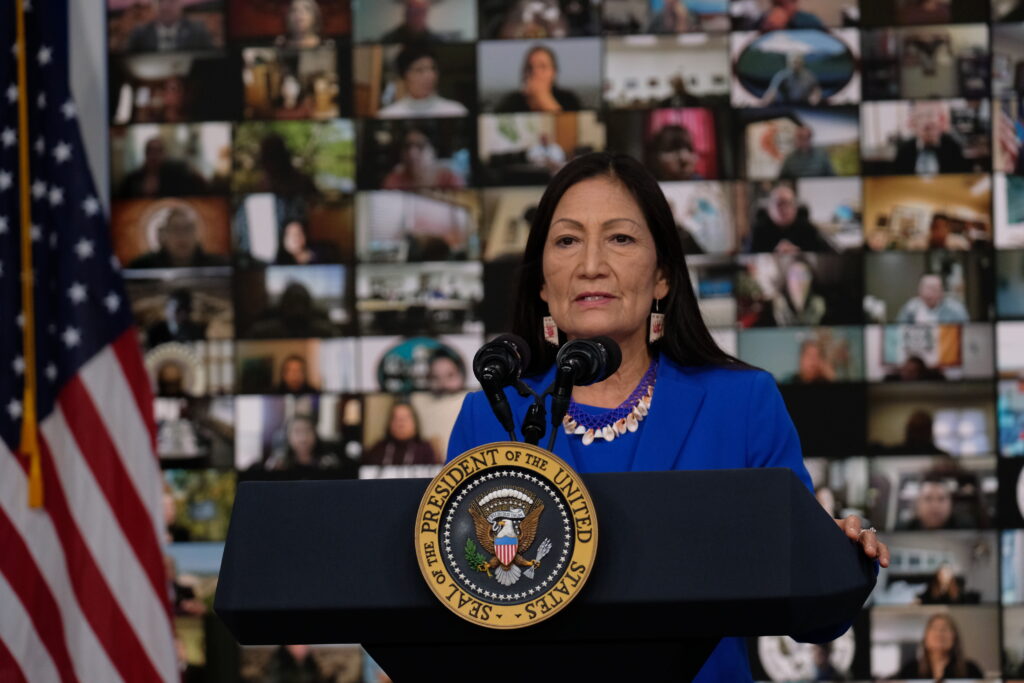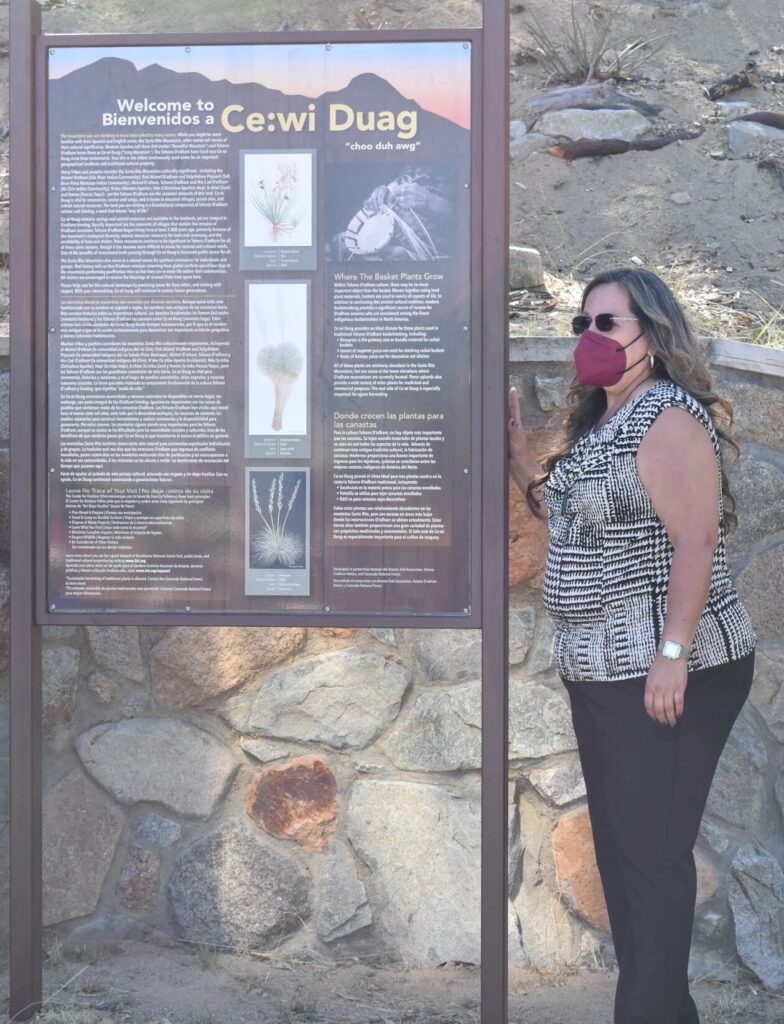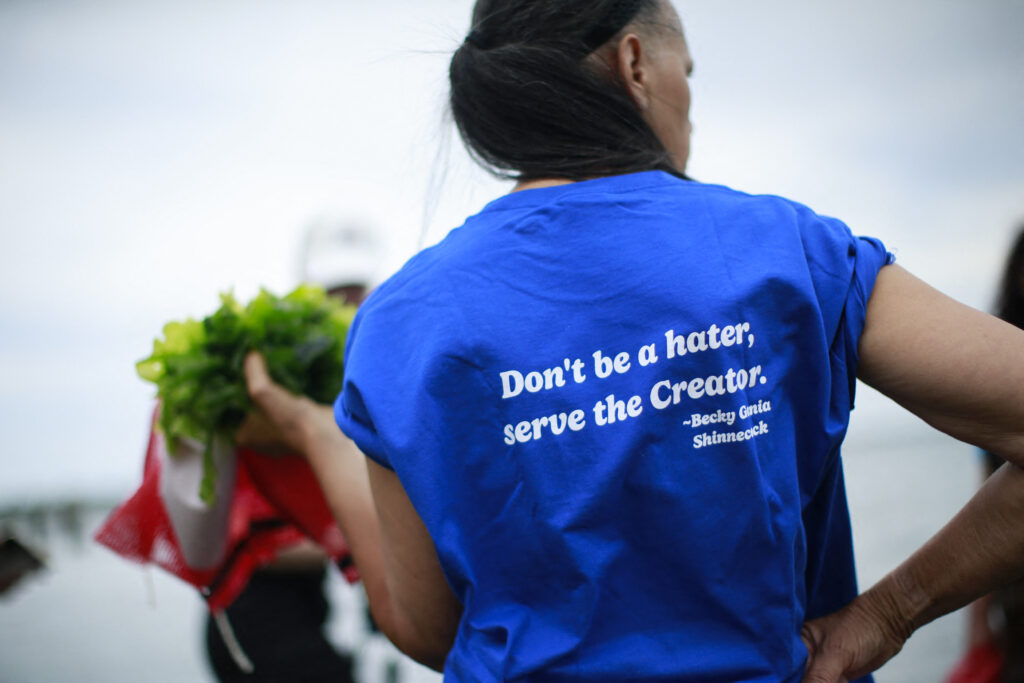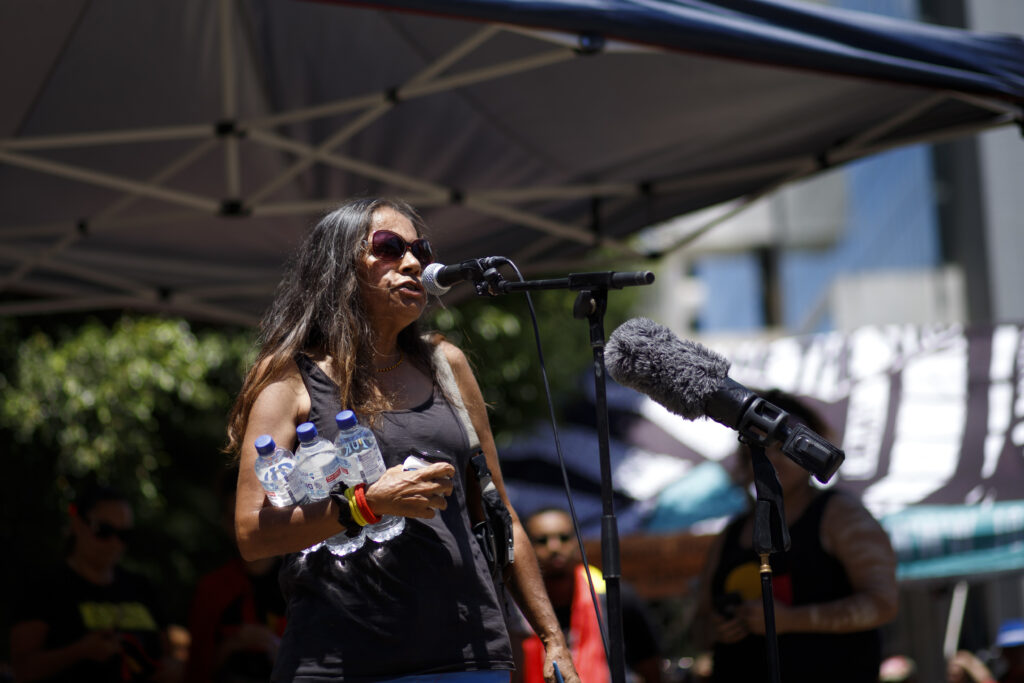Derogatory Place Names Need Indigenous Revision
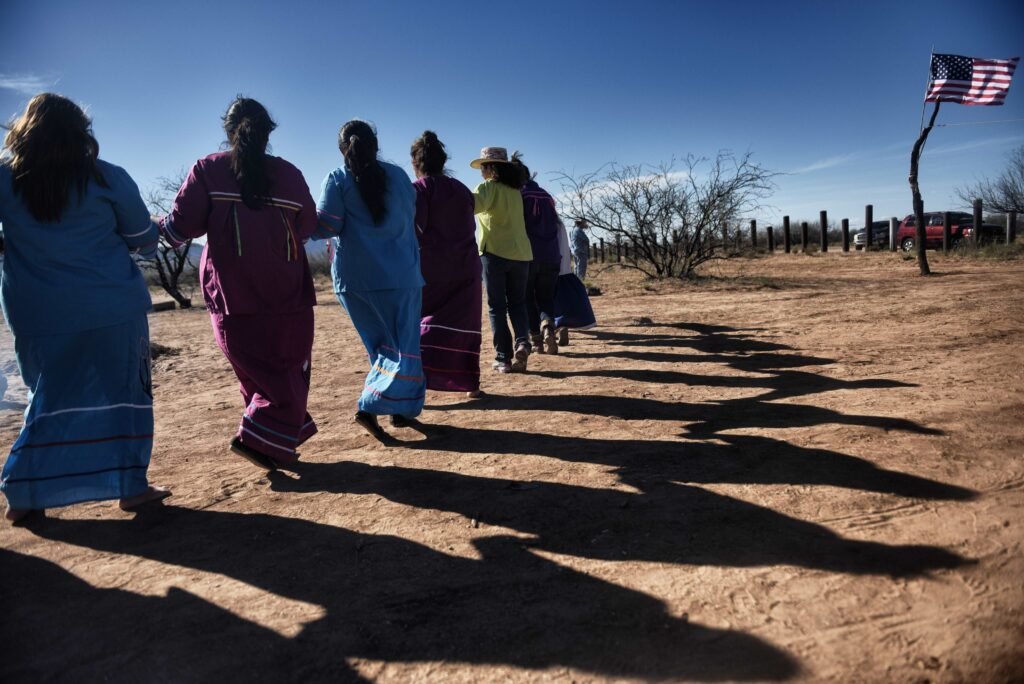
On September 8, the U.S. Department of the Interior took a huge step toward decolonization. The DOI announced it had chosen new names for nearly 650 sites that previously used the word “sq – – w,” a deeply offensive term historically used to describe Native American women. Secretary of the Interior Deb Haaland ordered the removal of the slur from all administrative and geographical place names and established a committee to identify and eliminate other offensive language from public places.
“I feel a deep obligation to use my platform to ensure that our public lands and waters are accessible and welcoming,” announced Haaland, who is a member of Laguna Pueblo in New Mexico. “That starts with removing racist and derogatory names that have graced federal locations for far too long.”
Place names are important to understanding the history of an area. However, they can also be an expression of power and oppression. The perpetuation of derogatory place names and harmful stereotypes is endemic of the settler colonialism ideology. It’s a critical issue that Indigenous communities around the world struggle with every day.
It’s also something I focus on every day in my work with the U.S. Forest Service. I work closely with co-workers to ensure a more inclusive future for public lands by building resources, creating trainings, and identifying avenues for more collaboration with tribal communities. As a non-Native, I am constantly trying to improve what it means for me to be a good ally.
While the DOI’s recent order is important, I believe policymakers, voters, and anyone who wants to be an ally to Indigenous people must move beyond its mandate. The majority of the replacement names for the sites are not Indigenous names, and many still reflect their settler colonialist history—as do the names of countless places in the U.S. and around the world.
I, among others, call for taking a deeper look at all colonial place names to uncover the truth under settler colonialism. I advocate for educating publics about Indigenous place names and the long oral history imbued in the land so that a fuller scope of history can be told. I encourage (and practice) self-education, such as engaging with Indigenous multimedia and becoming aware of the unique and expansive perspectives Indigenous communities have on current events. And ultimately, I hope for a shift in the consciousness that gives rise to the words people use.
Together, these actions can help heal relationships between cultures and between people and the land—a change that is critical to land management and larger issues such as the climate crisis.
INDIGENOUS PLACE NAMES TEACH AND HEAL
Along the Arizona National Scenic Trail in the Santa Rita Mountains, a kiosk recently went up that teaches the public about a name older than the one given to the mountains by Spanish settlers. The kiosk describes the relationship between the Tohono O’odham and Ce:wi Duag, or “Long Mountain,” their name for the Santa Ritas. The Tohono O’odham are one of many Indigenous communities who have lived in the landscape around Ce:wi Duag since time immemorial, but whose histories and relationship with the land are only now being shared as part of public lands programs.
This kiosk is an example of the ways place names can be tools for education and healing. It includes insight into contemporary O’odham people’s connection to Ce:wi Duag, counteracting the myth that Native cultures exist purely in the past. For example, the text reads: “Oral history tells us that O’odham veterans returning from global conflicts spend four days in the mountains performing purification rites so that they can reenter life within their communities. All visitors are encouraged to receive the blessings of renewal from time spent here.” This approach helps the message reach a wide audience and imbues the reader with a sense of respect and gratitude for the land.
The movement to change inappropriate place names is gaining momentum in the U.S. and globally. In 2016, Mount McKinley in Alaska was renamed Denali, an Athabascan name that reflects enduring Indigenous connections to the land. (It was previously named after U.S. President William McKinley, who never even visited Alaska.) This year, Mount Doane in Yellowstone National Park—named after Gustavus Doane, a U.S. Army officer who helped lead a massacre in which at least 173 Native Americans were killed—was renamed First Peoples Mountain. The new name, which was chosen based on input from 27 tribes, honors the peoples who lived in the area for at least 11,000 years before they were forcibly removed to make way for the national park.
In addition, the Te Pāti Māori (Māori Party) launched a petition to return ancestral place names to Aotearoa (New Zealand, which was initially named “Staten Landt” by a Dutch explorer who annexed the archipelago for Holland without ever setting foot on the land). The petition has gained so many signatures, a parliamentary committee is now formally considering the proposal.
Indigenous place names are powerful. They tell a story. They can help redefine people’s relationships with places and create a stronger connection to the land. In addition, removing harmful colonial place names and returning naming rights to Indigenous communities reaffirms their sovereignty and opens a safer space for reparation.
In recent years, new public maps have been created to acknowledge and teach about the wide range of Indigenous communities who live across the world by marking their ancestral lands and stories. These maps challenge the common understanding that the boundaries formed by reservation systems always existed. In truth, many Indigenous communities were very fluid. Much like the Ce:wi Duag kiosk, these map projects can help teach, heal, and affirm the sovereignty of Native Nations.
Native Land Digital, an Indigenous-led Canadian nonprofit, created online and app-based maps to illuminate the history of places around the world and to strengthen the relationships both Indigenous and non-Indigenous people have to the land around them.
The Indigenous Mapping and Research Project, spearheaded by the Partnership for the National Trail System and Kiana Etsate-Gashytewa of the Zuni and Hopi Pueblos, is another example of how people can take a deeper look at the impact of colonial place names on the landscape. This project will provide GIS layers and story maps overlayed on existing trail systems.
In the Pacific Northwest, the Yurok Tribe in California, the Makah Tribe in Washington, and the Confederated Tribes of the Grand Ronde in Oregon conducted a large-scale mapping project in preparation for offshore renewable energy infrastructure. To ensure the cultural landscape is protected, volunteers from each tribe were asked to mark on a physical map any areas that align with current practices or those passed on through oral histories, areas included in spiritual anecdotes, and any other cultural connections to the land. This project directly addresses the concept of data sovereignty, allowing collected geospatial data to remain the property of the tribes. Further, it affirms the invaluable expertise of Indigenous communities.
Designing projects with data sovereignty in mind increases opportunities for governmental and/or non-Native organizations to consult and engage with Indigenous communities, who hold critical perspectives necessary for any survey done under legal structures, such as the National Environmental Policy Act or the new Bipartisan Infrastructure Law.
The administrative histories of the United States’ public lands—including broken treaties and the horrific forced removal of Indigenous communities—limits progress in cultivating spaces for Native Americans to feel safe and have a leading role in the stewardship of their ancestral lands. Agencies must bring Indigenous perspectives into the process of inventory, assessment, and monitoring of cultural landscapes across public lands. This is already part of my work and that of other agencies around the U.S.
PLACE NAMES MATTER IN LAND MANAGEMENT
Public lands—and their adjacent Indigenous-owned lands—are increasingly at risk for degradation of ecosystems, intensified dependance on fossil fuels, and clearing for renewable energy. People don’t often think that issues of perpetuated stereotypes and derogatory terms are connected to ecological damage and the climate struggle. But I’ve learned in my work that they all go hand in hand.
Indigenous communities around the world are stewards of 80 percent of the Earth’s biodiversity across numerous ecosystems. When Indigenous communities are the deciding force behind stewardship practices, the land flourishes. Studies have shown that collaborations on large-scale projects such as forest management plans benefit from Indigenous expertise. Long-term subsistence practices such as collecting, burning, and accessing plants for medicine create a naturally resilient landscape. Such landscapes are key to combating the climate crisis.
Settler colonialism is extractive and has led to the climate chaos we find ourselves in today. Highlighting a decolonizing and Indigenizing framework in the management and administration of public lands, starting with the removal of derogatory place names, is crucial to meaningful engagement between the U.S. government and non-Natives and Native communities. It is also critical for better supporting the health of the land.
My work involves drawing attention to this fact through policy-based training. This includes highlighting the erased history of Native Americans’ stewardship of the land, prioritizing community goals during project management, and co-creating documents of agreement that honor Indigenous partners as experts.
Some practices that have shifted my own consciousness, and that of my co-workers, include acknowledging administrative histories from the outset, breaking the monolithic myth that there is just one Native culture, and honoring the diversity of Indigenous cultures. My colleagues and I also try to foster relationships by connecting our interests to those in the communities with which we work. This can be actions such as attending community basketball games, sharing meals, and asking after the wellness of family members before getting down to business.
Indigenous colleagues and friends and I also talk about practicing a heart-forward approach—being open to new directions, perspectives, and outcomes. I’ve found recent inspiration in the book Archaeologies of the Heart, which calls for an approach to work that is “centered around care and emotion, rather than dispassion and rationality.”
What allies are asking for is nothing new. In fact, it is the oldest thing in the world. It is about respect and kinship.
The momentum sparked by the DOI’s order is hugely important to long-standing activism that is already strong within many Indigenous communities. Non-Natives can move that momentum into our own lives and communities by educating ourselves about colonial place names and settler colonialism, disrupting the perpetuation of harmful and oppressive stereotypes, and doing the internal work to acknowledge uncomfortable truths.
In doing so, allies can help create safer spaces for Indigenous activism and contribute to healing the relationship between people and the land. Only then can people successfully move forward with connected issues such as climate change, the answers to which can only be realized through Indigenizing practices.

































